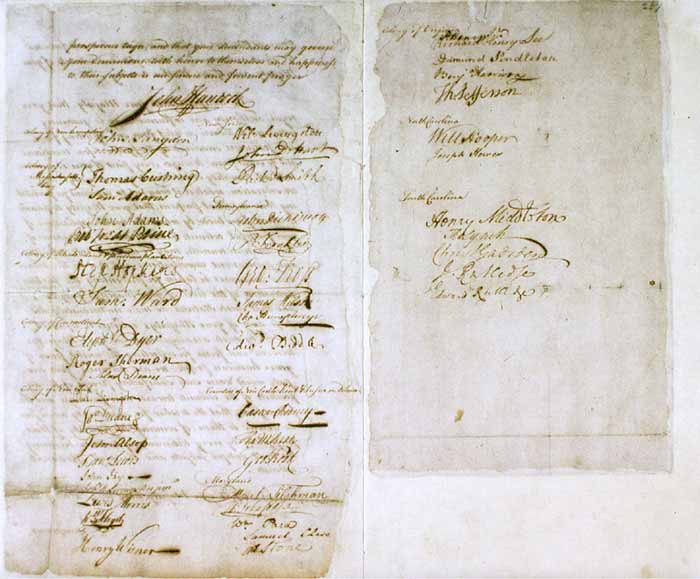Contents
Contents
The Olive Branch Petition was a document drafted by the Second Continental Congress and sent to King George III of England, in an attempt to prevent the Revolutionary War.
In this guide, we’ve explained what the petition contained. We’ve also explained its significance, and provided some interesting facts about the Olive Branch Petition.
Summary
By the time the Second Continental Congress convened in Philadelphia in May 1775, the first shots of the Revolutionary War had already been fired the previous month, at the Battles of Lexington and Concord.
On June 17, the Battle of Bunker Hill occurred, resulting in British victory, and more than 1,500 casualties on both sides.
Regardless, the majority of the colonial delegates still held loyalties to the British Crown. They believed that further conflict could be avoided by reasoning with the monarch at the time, King George III. Many believed that the British parliament was their biggest enemy, and that the king would be more sympathetic to their requests.
Therefore, Congress created the Olive Branch Petition, and sent it to King George III. The document was primarily authored by John Dickinson, and ratified on July 5, 1775.

The purpose of the petition was to de-escalate the conflict, and prevent a full-scale war from breaking out. It was designed to appeal to the King’s sense of justice, hoping he would intervene on behalf of the colonists to begin negotiating a peaceful resolution to the conflict. To this end, the document affirmed the colonists’ continued loyalty to the British Crown.
Specifically, the Olive Branch Petition stated:
- The colonists did not want independence from Great Britain – they remained loyal subjects of the King.
- The colonists wanted fairer treatment from the British government, specifically the repeal of the Coercive Acts.
- The colonists were British citizens, and as a result they had certain rights, such as the right to self-govern.
- The colonists wanted to avoid further conflict and loss of life – they appealed for a peaceful settlement to be reached.
- The Thirteen Colonies had made significant contributions to the success of the British Empire, and the colonists deserved fair treatment as a result.
Reception
King George III refused to read the Olive Branch Petition. On August 23, 1775, he declared that the colonists were traitors. The petition was rejected by the British parliament.
Significance
The Olive Branch Petition demonstrated to the colonists once and for all that the British were not prepared to negotiate a peaceful resolution to the conflict.
It persuaded people that nothing could be done to prevent the battles that had occurred so far from continuing into a full-blown war.
The rejection of the petition also increased support for independence among the colonists. It led to the publication of “Common Sense” by Thomas Paine in January 1776, a pamphlet that argued against the monarchy and for independence, persuading many towards accepting the idea of a complete break from Britain.
Facts
- While the petition was ratified by Congress, several Congressmen, including John Adams, thought that the petition was pointless, as war with Britain was inevitable.
- The British had reason to believe that the Olive Branch Petition was insincere, which was potentially part of the reason why it was ignored. They intercepted a letter from John Adams stating his belief that war was inevitable, and the petition was a waste of time. Also, the petition was immediately followed by the Declaration of the Causes and Necessity of Taking Up Arms, ratified by Congress on July 6, which used much more hostile language – claiming that the colonists needed to arm themselves to protect against British aggression.
- John Dickinson later abstained from signing the Declaration of Independence in July 1776 due to his ongoing hope for reconciliation.
- Today, the Olive Branch petition is kept in the National Archives of Great Britain.


